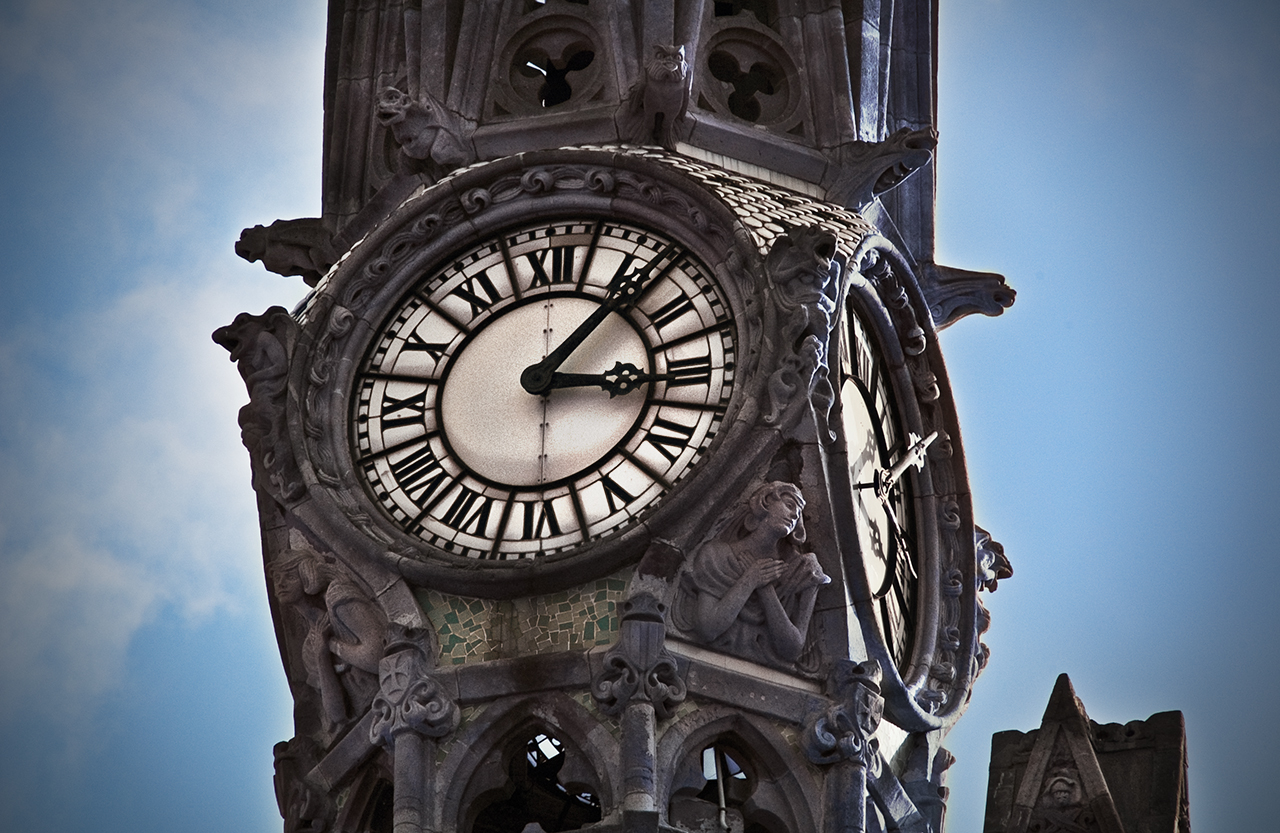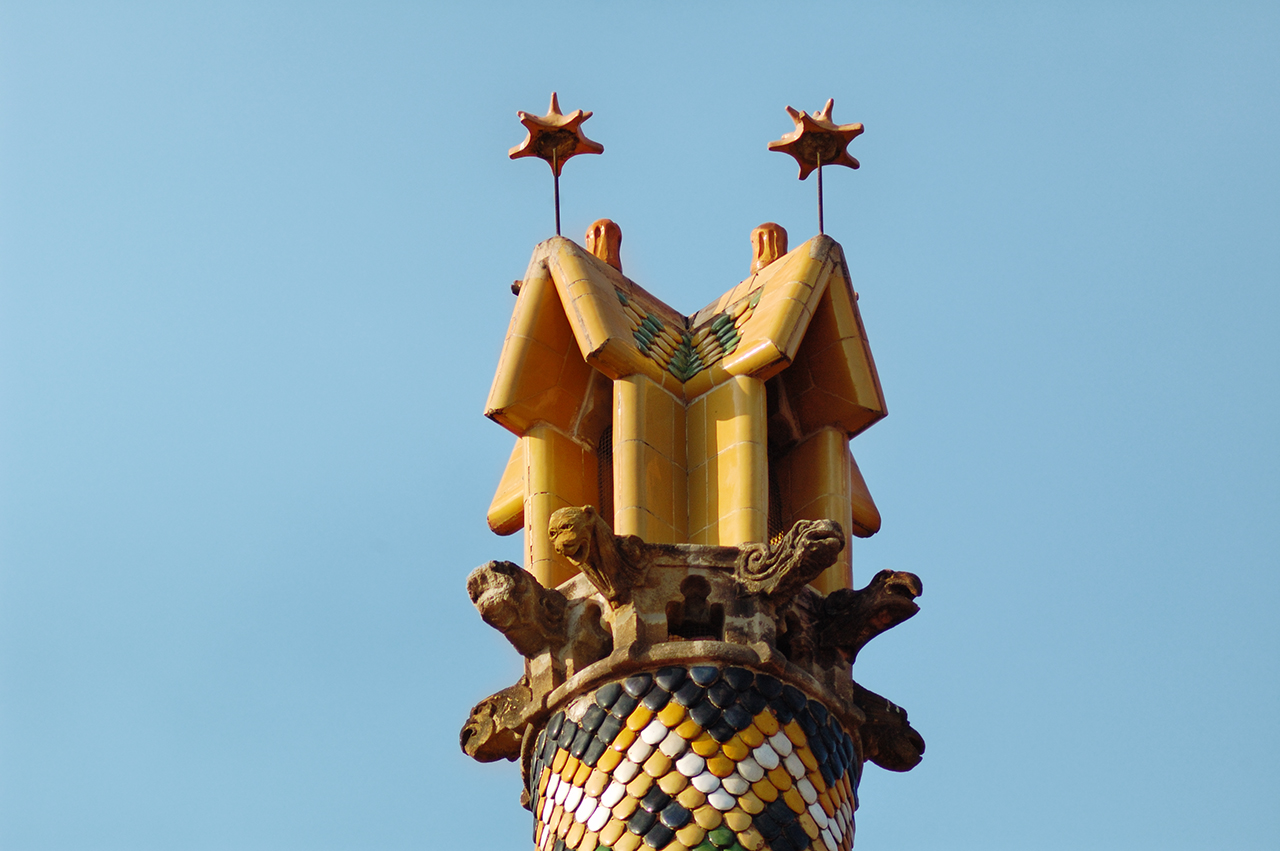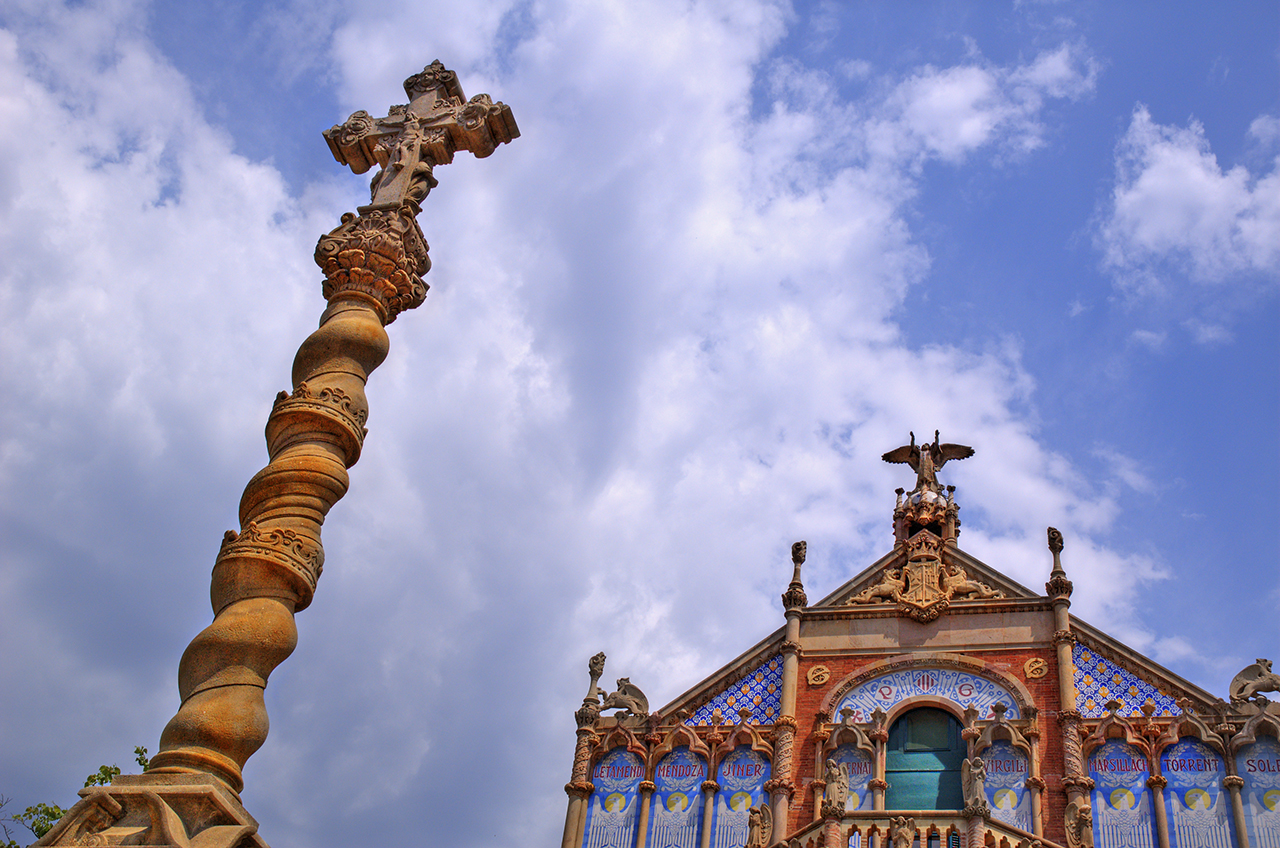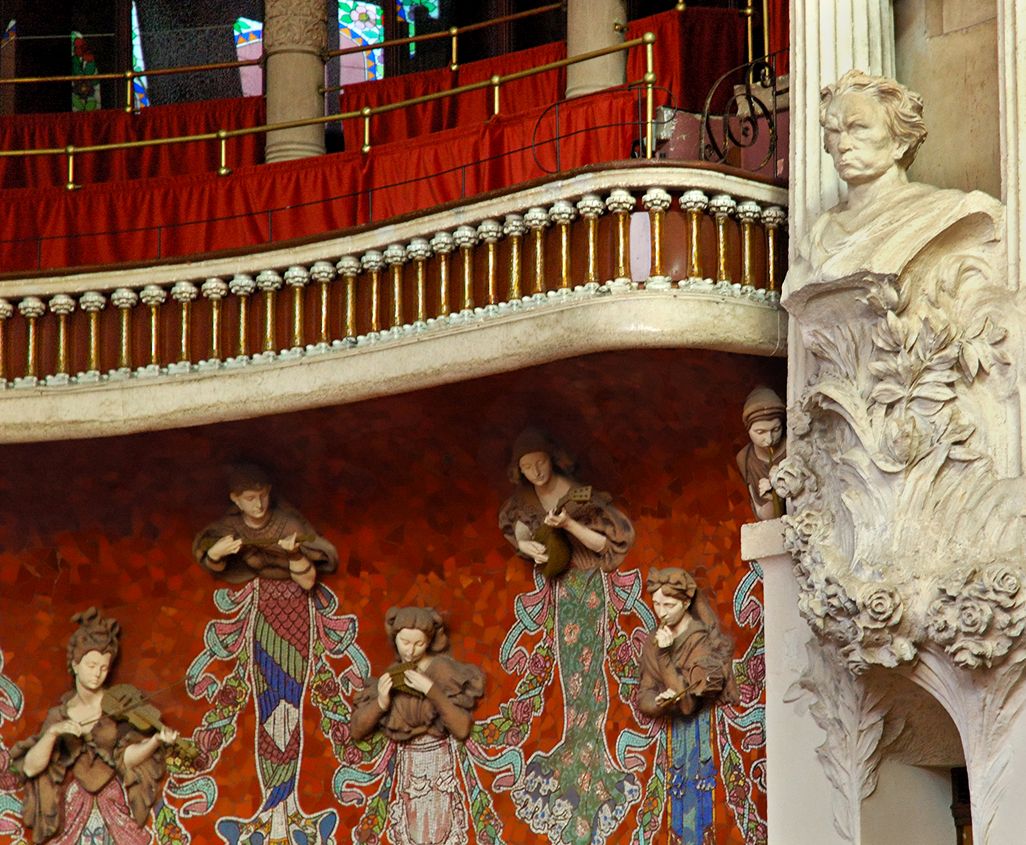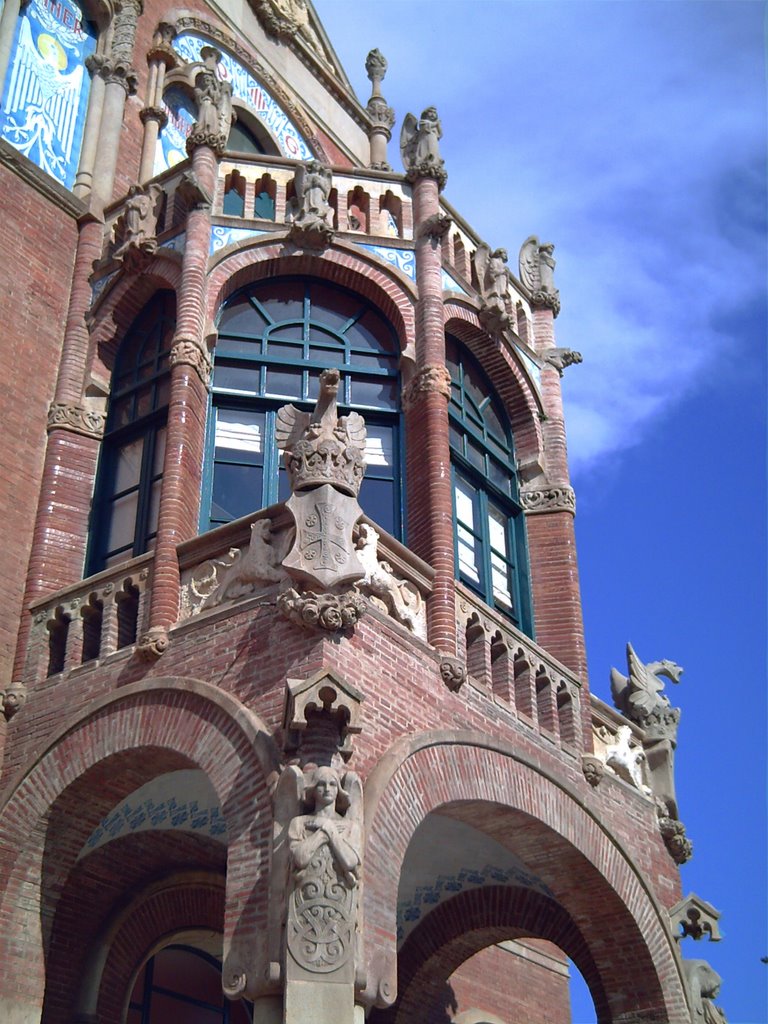
This is one of the ceilings inside one of the many pavilions in the modernist complex at Hospital de Sant Pau.
All buildings have been restored and opened to the public inside a complex called Recinte Modernista. Now a small fee is charged to enter and admire these beauties reborn.
This and other pictures I have, were taken with a cellphone and do not make justice to the real thing. The impression I get when I take a look at the result of such magnificent restoration is that everything has turned back to be like brand new, as if the hands of the skillful craftsmen had been working on those mosaics and those stain glasses yesterday.
A whole range of architectural wonder has been unveiled for all the world to see.
(By the way, I am happy to announce that today Barcelona Photoblog has reached 2.000.000 visits since it first saw light back in 2006. It's been years of hard work and of meeting very nice people here at the blog. I hope you have enjoyed it somehow. That really means something to me. Thanks to all those that made this incredible figure come true, thanks for your time and your comments. Happy to share my modest work with you all)
Update: In 2017 Barcelona Photoblog reached almost the 3 M figure but I decided to stop using the website that kept track of my visits.
